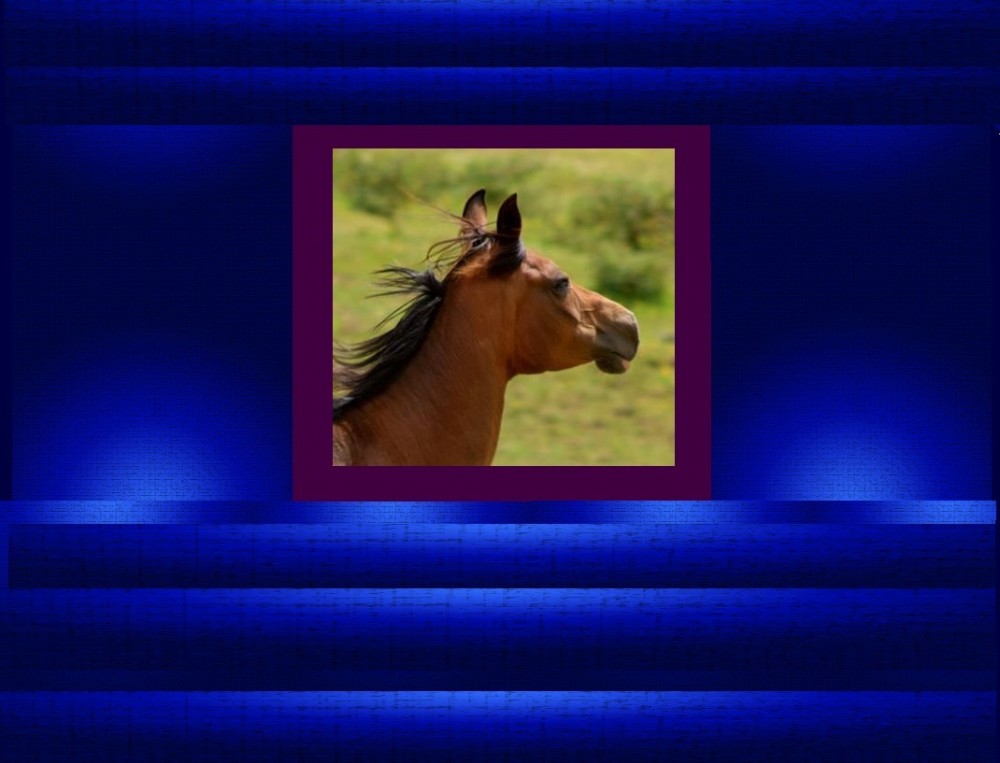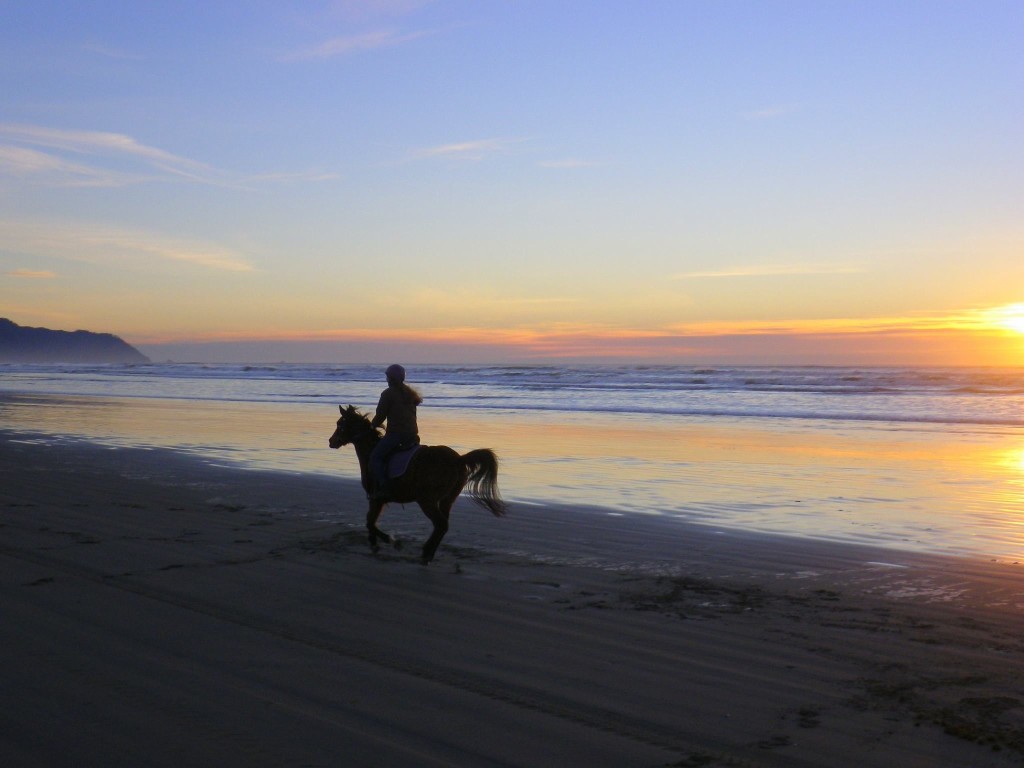My horse life nine or ten years ago was similar to what I’ve observed in many other horsemen and women. I loved horses, loved riding and owned my own horse. When I rode with other people, I’d mostly walk my horse, do a little bit of trotting and perhaps one to two minutes of cantering each ride. Rides were slow and methodical, usually in an arena or a simple trail we’d ridden on many times.
The horse people I knew at this point in my life fell into several categories. The first group of people were into Western gaming. They would drill their horses around barrels, poles, fast-paced reining and/or cow work. A second group of people took showing in an arena seriously. They would practice Dressage, Hunter/Jumper, English or Western pleasure, etc. A third group of people described themselves as trail riders. They would go out and mosey around outside at the paces I described above. I didn’t personally know any riders who did eventing, raced horses or were into combined driving. Polo in this part of the country was practically non-existent.
I would describe myself in that period of time as “game.” If anyone offered me a ride on their horse, I’d give it my best shot. As a fairly strong, more-experienced-than-most rider, I could handle almost anything a horse would throw at me, and if I couldn’t handle something I didn’t let it traumatize me or shake my confidence. Most of the time I thought I was having fun, but I wouldn’t have described most of my riding as “thrilling.”
Through a series of circumstances, I ended up with a new group of horse friends. For the first time in years, I found that I was less skilled than those I was riding with. The horses these women were riding made the horses I’d previously thought were challenging look like sleepy old nags. They were riding over difficult terrain at high speeds in minimalist English saddles and even bareback. Since some of the most adventurous riders in our group were older than me; 40s, 50s and up, the often used excuse of “more cautious with age” was not applicable.
After a long warm-up, we would canter, then trot, and after a little walking, we’d canter and gallop some more. I learned that sound horses can get into excellent shape, and that what I’d previously asked my horse to do had barely tapped into her athletic potential. I hadn’t understood that the average horse can easily be conditioned to the point where they can canter and gallop for a mile, two or more without getting worn out. I learned that my horse had a lovely, ground-covering trot that she could keep up for miles without breathing hard or breaking a sweat. It was far different from the “extended trot” I’d coaxed her into while practicing Dressage in the arena.
I’d heard that “a fit horse is a dangerous horse.” Perhaps that might be true if the horse was put into excellent shape by hours of lunging and forced exercise without being ridden. However, if you spent the time while the horse was getting into shape in the saddle, then both you and the horse will be in excellent shape and a team well-tuned to working together.
Every week we had at least one exciting ride, and I became addicted to adventure on horseback. Adventure meant running through a winding trail where the horses had to switch leads every several strides as they cantered along. Adventure was finding a series of logs we could jump the horses over as we raced in tandem like a steeplechase. It was finding new shortcuts through the woods and crossing streams and rivers. We may have loved the rides, but the horses were excited about going out too. Their eyes would get bright and their ears would prick forward as we saddled up. Sometimes we’d have five, six or more horses out running together and we’d know each horse’s best position based on their running speed, herd status and personality.
Once I’d experienced adventure on horseback I knew it would be impossible to be happy again with the old form of riding I’d known before. Those of us who appreciate this style of riding understand the attraction of a hot blooded horse that enjoys movement and loves to go fast.
I feel there is a natural hesitation with many casual riders that prevents them from embracing adventurous and speedy riding. Until I’d practiced it myself, I’d been afraid of a few things I’d heard. One fear was that letting a horse run would create an uncontrollable horse, one that would try to run all the time and would become unsafe for less skilled riders. After galloping many types of horses, I can assure you that this fear is completely unfounded. In reality, galloping horses frequently helps them stay more calm at faster speeds and become more controllable. The more you practice transitioning to gallop and back down to a walk, the easier it becomes for the horses.

However, there are some factors to consider. Any horse is likely to get over-excited the first time or two when allowed to gallop. The best way to introduce galloping all out to a horse is to take him out the first time with a calm, experienced horse that will stop reliably. Also, for the first time or two choose an area where there is plenty of room to run on and on should the horse decide not to slow down when his buddy does. Then plan ahead with the rider on the calmer horse when and where you will stop, and ask the other rider to begin slowing the calm horse down before you ask the greener horse to stop.
Another thing to understand is that there are hot-blooded horses that may become too excited when galloping on a fairly regular basis. This is not because you are galloping them, but because of their innate personality. There can be a slight catch-22 because the hard exercise can help these horses burn off some of their excess mental energy, but usually these are the horses that truly enjoy running and don’t wish to stop. At the same time, you must take into consideration that these horses cannot be allowed to run in situations where it would be unsafe if you lost control. You must be strict about never allowing these horses to pick up speed when it wasn’t requested.

http://www.panorama-trails.com/
In my mind, there is a similarity between having an excitable horse that loves to run and having a big dog breed that has a potential for aggression. While you might safely let a less excitable horse “take off” or change gait without being asked once in awhile, you can’t allow this with a more excitable horse. In a similar way, you can safely play “aggressive” type games with some dog personalities, such as the mellow Dalmatian I once owned or possibly a Cocker Spaniel. But you never want to play games like tug-of-war with a dog that has the possibility for aggressive tendencies, which you might assess in a breed such as a Chow or Cane Corso.

There are several basic ways that horses tend to gallop based on their personality. One type of horse tends to take off, go faster and faster for about 1/8th or 1/4th of a mile and then after that the most you’ll get out of them is a slow canter. They don’t have the mental drive to gallop very far. After riding them a time or two and being thrilled by their initial speed, you may find yourself disappointed.
Another type of horse starts slow and builds speed, but once they are going they will stay at a consistently fast pace for a long time. These horses can be deceiving because you often don’t think you are going as fast as you actually are.
The horses I feel are the most fun to ride are the ones that take off like a shot but have several different “gears.” You think you are going fast, but every time you ask the horse they kick it up another notch. These horses are often the most thrilling to ride with other horses because they usually love competition.
The rules of adventure riding I follow:
1) The horse must never get hurt
2) Always make sure the terrain is safe for the speed you are riding
3) A new trail or an old trail right after a storm must be ridden slowly
4) If you don’t wear a helmet, plan to crack your skull open on a tree branch you didn’t notice or the rock you hit when your horse falls down
5) The faster you go, the longer it will take you to stop
6) Always ride to the level of the greenest horse and least experienced rider
7) Murphy’s law always applies
What you don’t want to see when galloping around a corner


